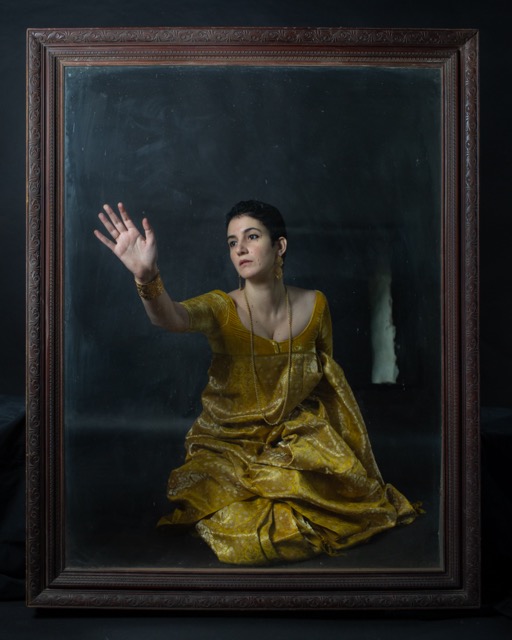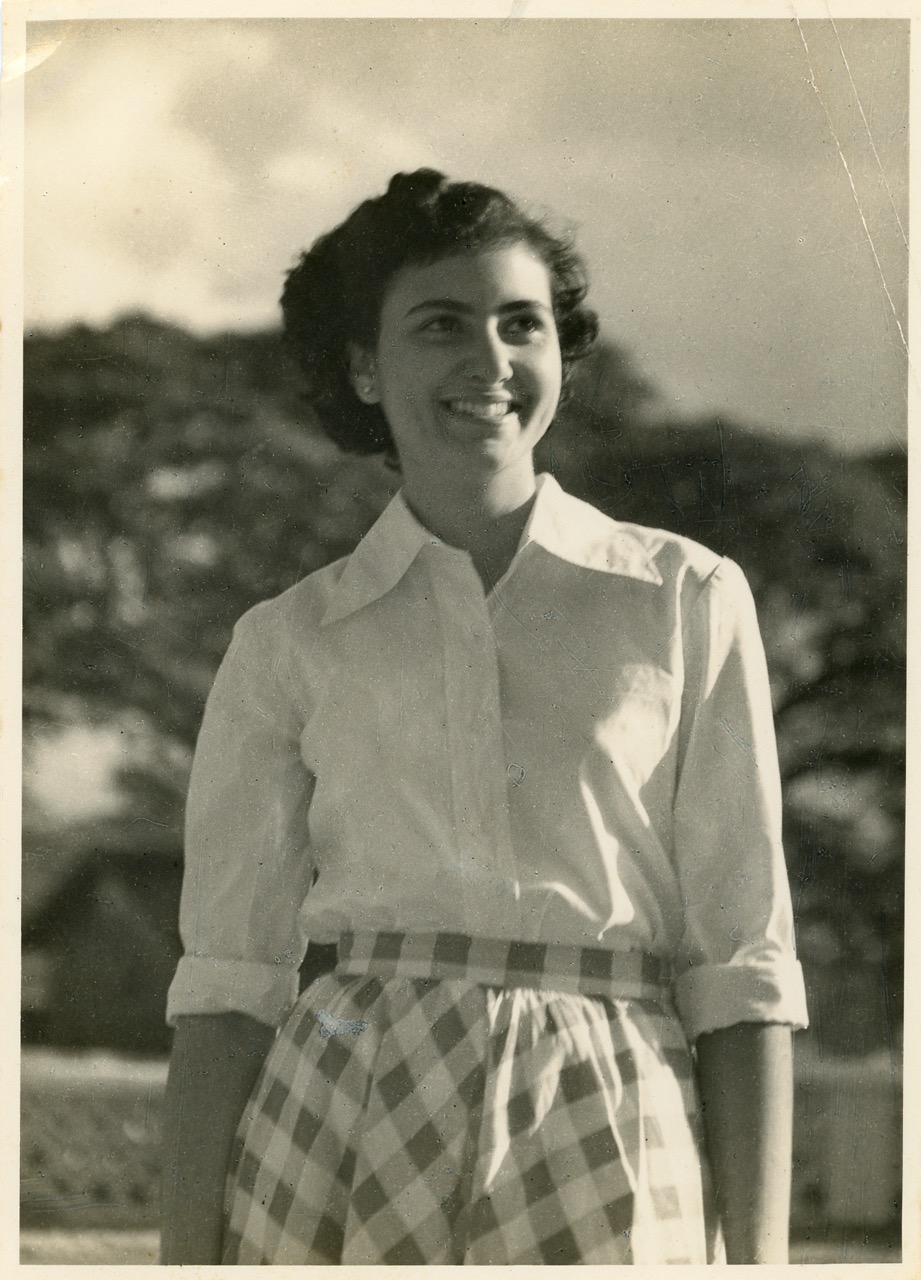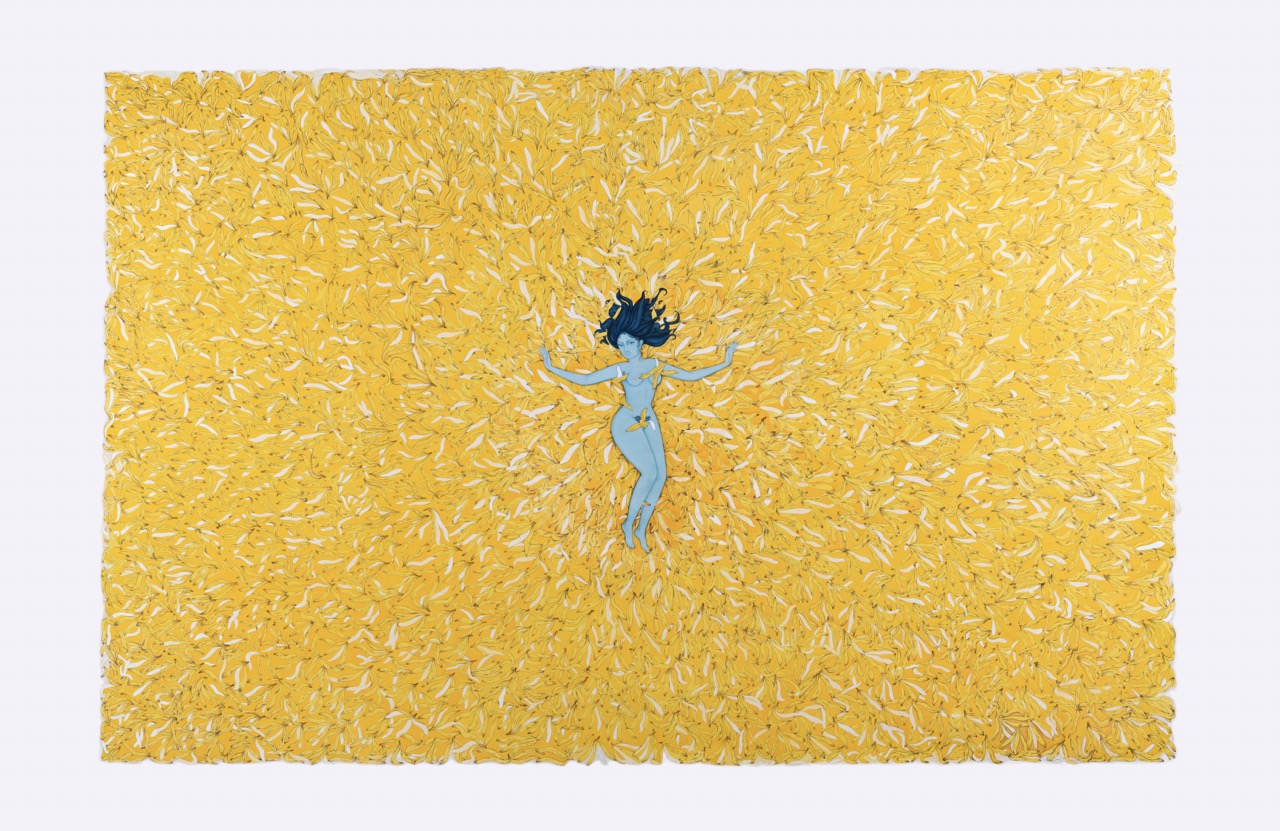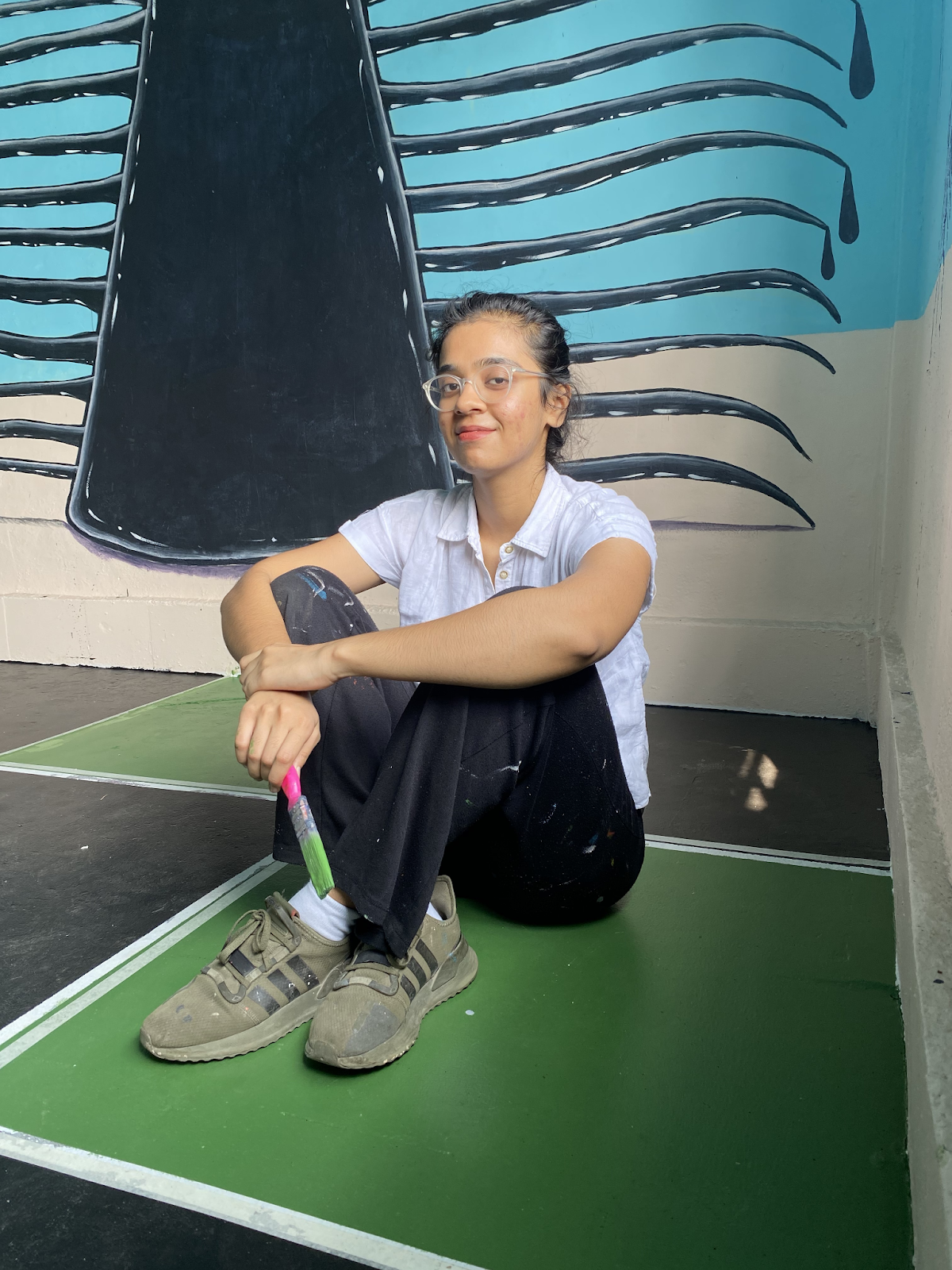Divya Cowasji, a photographer and documentary filmmaker from India, earned acclaim with a National Award in 2015 for her documentary ‘Qissa-e Parsi.’ In a recent interview with Art Fervour, seated beneath portraits of her Great-great-great-grandparents, she shared her journey from filmmaking to photography, exploring themes of loss, memory, and the connection between photography and the human experience.

Under Paternal Great-great-great- Grandparents’ portraits, wearing Paternal Great-grandmother’s blouse & Maternal Great-grandmother’s sari. With Maternal Grandmother’s watch. Image courtesy of the Artist.
From Filmmaking to Photography
Cowasji’s entry into documentary filmmaking began unexpectedly in 2010, spurred by the need to create a sensitive environment for her subjects. This pivotal moment captures an artist attuned to the nuances of her craft, valuing authenticity and empathy above all else.
In her transition to photography, sensitivity and ethical considerations take precedence over technical perfection. Rather than aiming solely for aesthetically pleasing images, she seeks to capture the essence of her subjects with compassion and integrity. She describes viewing the world through a slower, more considered lens, drawing attention to qualities like gentleness, sensitivity, and ethical engagement with her subjects.

“I seem to have forgotten more than I can remember.” – Granpa, 2020. Image courtesy of the Artist.
Her journey into photography traces back to a childhood moment in her native town of Mhow, Madhya Pradesh, where the sudden disappearance of an old red brick bakery stirred a deep sense of loss within her. This experience ignited an instinct to document, driven by a fear of losing cherished memories and fleeting moments. It’s a sentiment that resonates throughout her work, as she captures voraciously, not necessarily with intention, but with an urgent desire to preserve the ephemeral.
Capturing Memories Through Photography
Cowasji’s photography becomes an act of remembrance, a means of grappling with the inevitability of loss and the transient nature of life. It’s a theme that takes on a resonance in the wake of personal grief, as she navigates the emotional terrain of losing loved ones. Through her lens, she confronts the intangible essence of memory, seeking solace in the tangible remnants left behind by those who have passed.

Minnie Mama’s favourite Kaftan in her garden, the spring after her passing. Image courtesy of the Artist.
The images she captures serve as artefacts of memory, as Cowasji meticulously documents her family’s belongings. Within a silver box or a hairnet, she uncovers traces of lived lives, providing a glimpse into the intimate details of her ancestors’ existence.

My Great-grandmother’s box of treasures. Image courtesy of the Artist.
Photography, in her hands, becomes a means of storytelling, a way of weaving together the fragmented threads of memory into a cohesive narrative. She invites us to contemplate the play between the tangible and intangible, the seen and the unseen, and to confront our own relationship with memory and loss.

My Grandfather was born in this room. On this bed. It was 1928 and it was also the year electricity came to our town. He loves to jokingly say that he brought the light. I really believe he did. His elder sister was confined to this same bed with crippling arthritis and subsequent paralysis for most of her adult life. Photographed on it a beloved negligee from her youth she left my mother. Image courtesy of the Artist.
When asked about how her work relates to the present, Cowasji shared a thoughtful response reflecting her approach. She talked about a time of personal loss, especially when her grandmother passed away, when people said things like “We never value a thing until it’s gone”. She knew in that moment that that is not how she had lived her life; perpetually and almost painfully aware of the loveliness of small moments that make up a life. Rather than waiting to appreciate things in hindsight, she focuses on cherishing the fleeting nature of the present as it unfolds.
Discussing her sources of inspiration, Cowasji recalls a moment from her twenties when an extended period of illness confined her to bed rest. During this challenging time, a thoughtful gift of books from friends included “Just Kids” by Patti Smith. This particular book, featuring intimate portraits captured by Smith’s then-partner Robert Mapplethorpe, served as her introduction to photography in a deeper sense. Initially drawn to emulate the style of these photographers, her perspective gradually shifted over time.
Challenging Traditional Narratives
Reflecting on her grandfather’s significant role in shaping her artistic sensibilities from an early age, Cowasji speaks of his skill as a storyteller, which entertained her and instilled in her an appreciation for oral history and personal narratives. Incorporating his techniques into her work, she infuses her art with intimacy and narrative depth, channelling familial memories into her images. His influence is evident in her work, which carries a sense of nostalgia, authenticity, and enduring human connection.

Two Years Since Granny’s Gone, Granpa: Our whole lives I never bought her anything. Even for birthdays, I would give her money to buy things. She knew I had no taste.. Except her. 2020. Image Courtesy of the Artist.
Her artistic journey has been influenced by her experiences as a documentary filmmaker. She grapples with the ethical complexities inherent in the act of representation, recognizing the power dynamics involved when pointing a camera at others. This awareness led her to turn the lens inward, using self-portraiture as a means of reclaiming agency and exploring her own lived experiences.



#1 In Dinoo’s Sari #2 Dadima’s Party Top, #3 Cor’s i.e. traditional hand embroidered Gara sari borders, handed down over five generations. All images courtesy of the artist.
By centering herself as the subject, Cowasji aims to disrupt the traditional notion of documentary as objective truth, acknowledging the inherent subjectivity of any creative endeavour and foster a more inclusive and empathetic approach to storytelling. Through this approach, she confronts the unequal power dynamics of photography and filmmaking, striving to minimise harm and engage with subjects in a more sensitive, softer, and respectful manner.
Through her imagery she invites us to find solace in the enduring power of memory.
Get to Know the Artist:
Describe your art in 3 words: Slow, intimate, playful
Favourite artist: Francesca Woodman
What are you listening to currently? Stumblin’ In by Chris Norman and Suzi Quatro
The last exhibition you saw? Sohrab Hura’s ‘Ghosts in My Sleep’ at Experimenter, Colaba
Your advice for new artists? I feel ill equipped to give advice but I think one thing that held me in good stead is to try and build community with your contemporaries





